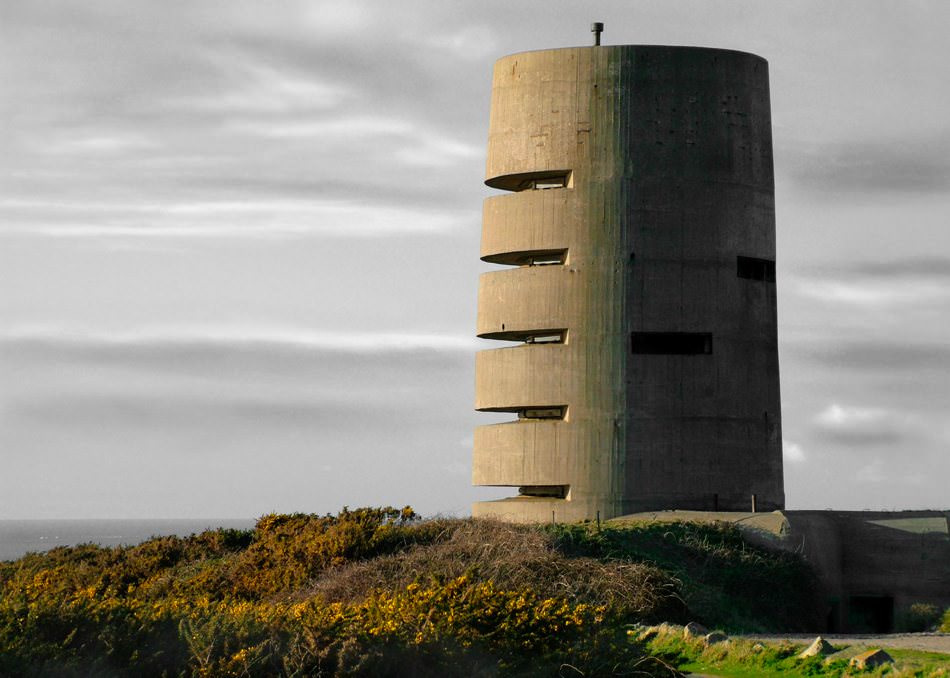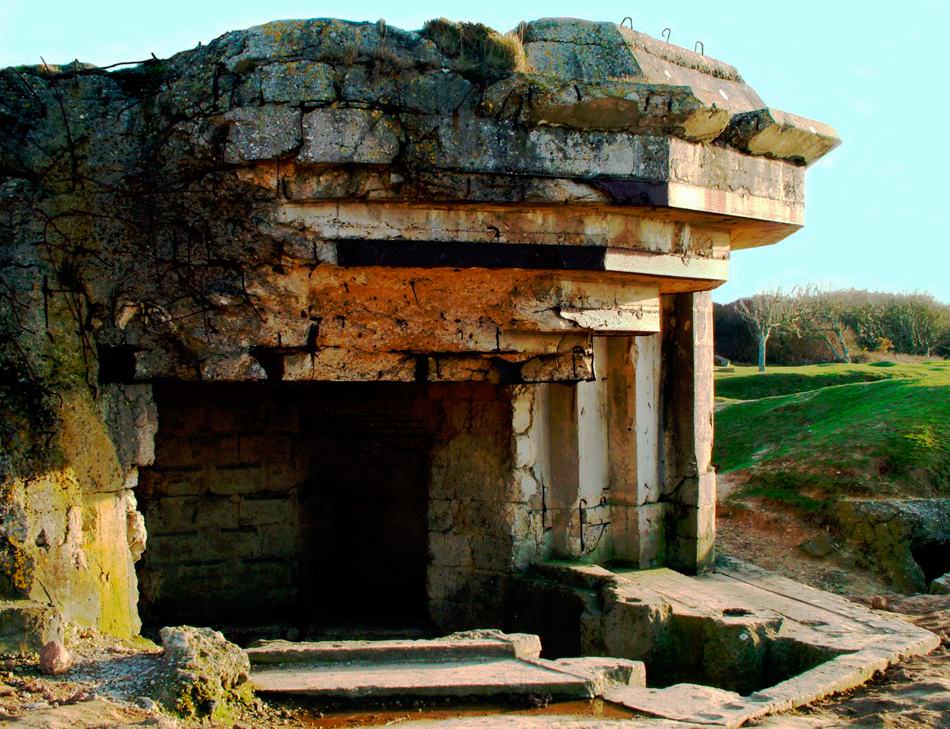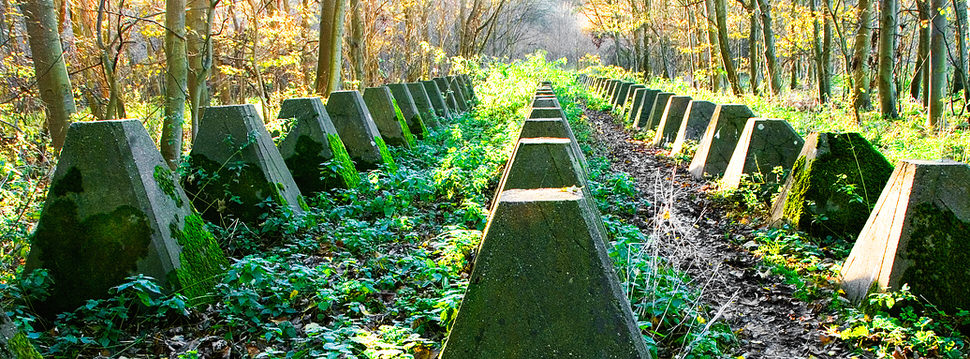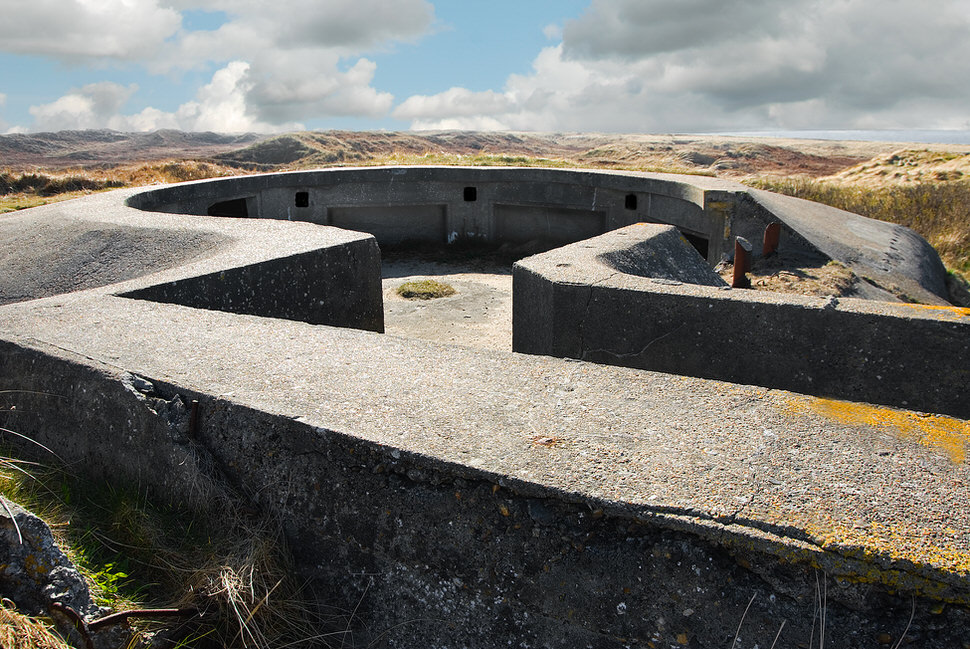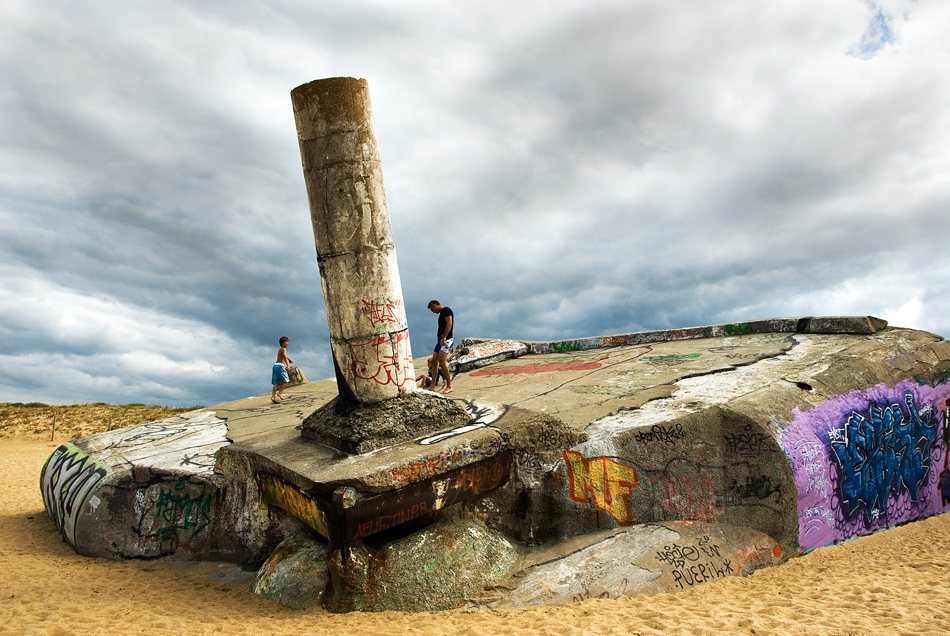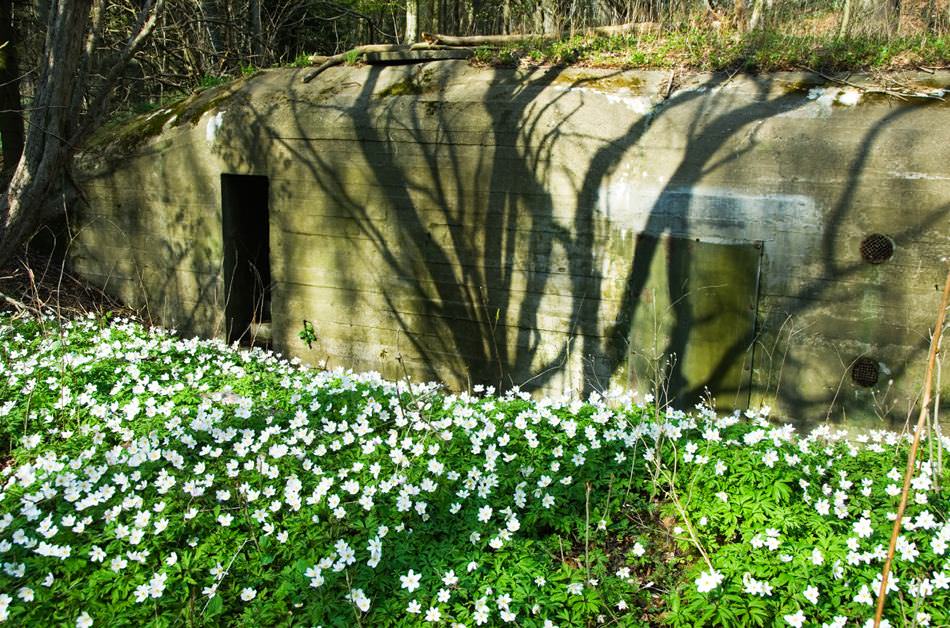Seventy years ago, on June 6, 1944, a heroic group of American Rangers scaled the one-hundred-foot cliffs of the Pointe du Hoc, a vital promontory dividing two of the Normandy beaches, which were code-named Utah and Omaha. The beaches, on the eastern side of the Cotentin Peninsula, had been selected for the D-Day landings that began the liberation of Western Europe and the end of Adolf Hitler’s Thousand Year Reich—after barely twelve years. Equipped with rocket launchers for firing grapnels and ropes and ladders requisitioned from the London Fire Brigade, the Rangers scaled the cliffs while two Allied destroyers, the USS Saterlee and HMS Talybont, provided covering fire. When they reached the top they found that the target they were seeking—a large battery that threatened the landing beaches—was empty, its guns removed a little further inland.
Though they found those guns and neutralized them using thermite grenades, the Rangers were isolated. Their radios had been damaged by seawater, leaving them unable to contact their backup group; assuming the assault had failed, this group landed further east, on Omaha beach. The first group of Rangers faced a withering succession of German counterattacks. Having run out of ammunition they used weapons from Germans they had captured or killed, an action that exposed them to “friendly fire” from the force that finally arrived to relieve them, because of the distinctive sound of the German weapons. By the end of the two-day action, the original group of more than 225 had been reduced to around 90 fighting men.
The Pointe du Hoc battery was part of the Atlantic Wall, the massive chain of defenses built by the Germans between 1940 and 1944 to protect Europe from Allied invasion—spanning not only the Norman coast of France but the entire length of the continent from northern Norway to the Basque country between France and Spain. My wife, the photographer Ianthe Ruthven, has documented many of them in “Atlantic Wall,” a series of photographs now on view at London’s Royal Geographic Society.
Despite their lethal purpose, the bunkers are strangely alluring. Their hard geometrical lines are often softened by the curved angles intended to reduce the impact of shrapnel and the effects of blasts. Crouching in the surrounding landscape and covered with netting and plants to maximize concealment from the air, they display a variety of zoomorphic or even human shapes. Casemate embrasures have yawning mouths like sharks, observation towers stand like giants with helmets and visors.
Like several other sites in Normandy where the landings took place, the Pointe du Hoc battery is now a museum. Normandy, which President Obama is visiting on Friday, is one of the few areas where these extraordinary structures are now part of the tourist trail; visitors bombarded with signposts directing them to battle sites, memorials, and cemeteries. Elsewhere, however—including in Belgium, Holland, Denmark, and Norway, and in other parts of France—these impressive structures are for the most part neglected, the least acknowledged of Europe’s military monuments. This is perhaps not surprising, as very few of them saw action, and for most of the regions, they are essentially monuments to failure—the failure of national armies to resist the Nazi invasions, and, ironically, the failure of the Wall itself, which, in the absence of German air power, proved an inadequate defense against Allied invasion.
With its strong points focused on harbors, the chain of bunkers, foxholes, and casemates that still litter Europe’s Atlantic coastline had been predicated on Hitler’s belief that the Allies would be unable to mount a successful invasion without taking a sizeable port. In the event, having successfully used deception to convince the Germans that they intended to land around Calais, they encountered only limited resistance from the bunkers and casemates commanding the D-Day beaches. As Albert Speer opined, “by means of a single brilliant technical idea [the portable Mulberry harbors] the enemy bypassed these defenses within two weeks of the first landing.”
Today, the British architectural historian Joseph Rykwert writes in the catalog to the Royal Geographic Society exhibition, the relics of the Atlantic defenses amount to a “lasting token of a mighty miscalculation.” In barely two years it consumed more than 17 million cubic meters of concrete, depriving Hitler’s armaments factories of more than a million metric tons of iron. Albert Speer, who took over the project after the death of Hitler’s chief architect, Fritz Todt, recollected during his years in Spandau prison, it had been an exercise in futility: “All this expenditure of effort was sheer waste.”
Advertisement
The Atlantic Wall’s military futility is only part of the story. The construction exacted a terrible human cost. At its height in 1944 nearly 300,000 workers were coerced into the project. While around 10 percent were Germans in supervisory roles, the vast majority were forced laborers or prisoners of war. Thousands of these workers died in the harshest conditions.
The Atlantic Wall, however, was not just a product of slavery. Voluntary or semi-voluntary labor was essential to its construction, with Frenchmen offered the choice of working on the Wall and the huge submarine pens on France’s Atlantic coast, or hard labor in Germany. Local contractors operating as subsidiaries of German companies benefited from the program: the Wall is a monument to the profiteers of occupied Europe as well as to those who lived and died building it, or heroically breached its ramparts. 3.7 billion reichsmarks were spent on fortifications in France alone.
Architecturally, the Atlantic Wall was designed according to the military logic of its time: it would be wrong to regard it as an example of “Nazi” or “fascist” architecture. The Wall’s seventy-odd standard designs specified the proportions for each type of structure based on criteria determined by their military purpose: room heights in bunkers, for example, were either 2 meters or 2.2 meters for normal situations, minimized to reduce overall height and exterior configuration. Internal room dimensions were based on multiples of 10 centimeters, so that the progression of spaces between external walls was mathematically precise irrespective of the number of partitions.
By integrating form, function, and materials, the bunkers and casemates fulfilled the criteria of a rationalist architecture using standardized sections that could be reproduced quickly in large quantities. Many of the structures are strikingly avant-garde in appearance, evoking buildings such as Le Corbusier’s domestic “machines for living in.” The innovative use of molded concrete had a strong influence on the “new brutalism” style that became fashionable after the war. (Many of the buildings erected in the post-war period employed the same materials, techniques, and aesthetic. They include widely admired examples of the “brutalist” style, such as Erno Goldfinger’s Trellick Tower (1972), Denys Lasdun’s National Theatre (1979) in London, and Kallman McKinnell’s Boston City Hall (1968).
As well as its military functionality, the Atlantic Wall was designed according to modernist industrial logic and the aesthetic of strong geometrical forms, where concrete is allowed to “speak” by showing the imprint of wooden shuttering without additional cladding or finish. Thus, the structures are infused with a modernist aesthetic that Hitler, who emulated neoclassical grandeur, is supposed to have despised. As the architectural writer Jonathan Meades puts it, “the Organisation Todt built many more Expressionistic structures than the Expressionists did; it gave the idiom new legs.”
Architectural quality is not a corollary of a building’s functions. No one considers destroying a Norman castle or Vauban fort because of its oppressive connotations. Future generations may well be shocked that most of the formidable Lindemann Battery at Sangatte, on the English Channel, is now buried under a lake of slurry created by the Channel Tunnel excavations in the late 1980s and early 1990s. The Atlantic Wall deserves recognition as a landmark of architectural history and, paradoxically, pioneer of industrialized construction.
As ruins, WWII bunkers may evoke Romantic sensibilities as impressively as any Norman abbey or castle. In the less accessible places nature has been at work, covering them with lichens, ivy, and other climbing plants, or creating mysterious patterns on the concrete surfaces through the action of water, weather, and minerals. In wooded hills and pastures, what were once symbols of menace and power have mutated into the melancholy relics of a lost civilization. Cows and sheep sometimes use them as shelters and a few have even been converted into unusual weekend retreats.
In urban areas of France, and on holiday beaches, graffiti artists have covered them with colorful, cheeky displays. Along with nature, it is now the graffitists who subvert Hitler’s project most powerfully, countering its murderous logic with ridicule. “The once mighty are long dead (by their own hand, mostly),” Meades explains.
Now they are turning in their graves as their monuments to boorish belligerence and racial supremacy are mocked. Mockery is powerful. It does not accept people or dogma on their own terms. It ridicules them. Here, dour grey concrete is rendered playful. Nazi ruins can hardly be said to be causes for optimism. Yet when the physical remnants of a terrible regime are divorced from their purpose the weight of the past is lifted from us.
In Belgium, where the real-estate developers have long been at work along its coastline, very few bunkers remain on the shore. One solitary relic now serves as a sanctuary for a protected species of bat. In Holland bunkers tend to be treated more reverently, as memorials for the men who died in them, with notices forbidding graffiti or vandalism. In Denmark, which saw relatively little fighting on land, the approach is much less gloomy, with bunkers playfully converted into horse sculptures and “bunker-love” festivals held in summer. In Norway, where most of the strong points were taken over by the army and only decommissioned after the Cold War, bunkers now feature in pleasant parklands, with tables for picnics and swings.
Advertisement
“The Atlantic Wall: Hitler’s Coastal Fortress from the Arctic to the Pyrenees,” an exhibition of Ianthe Ruthven’s photographs, is on view at the Royal Geographical Society in London through June 20. An accompanying book, with an introduction by Joseph Rykwert, is available from the Royal Geographical Society.

